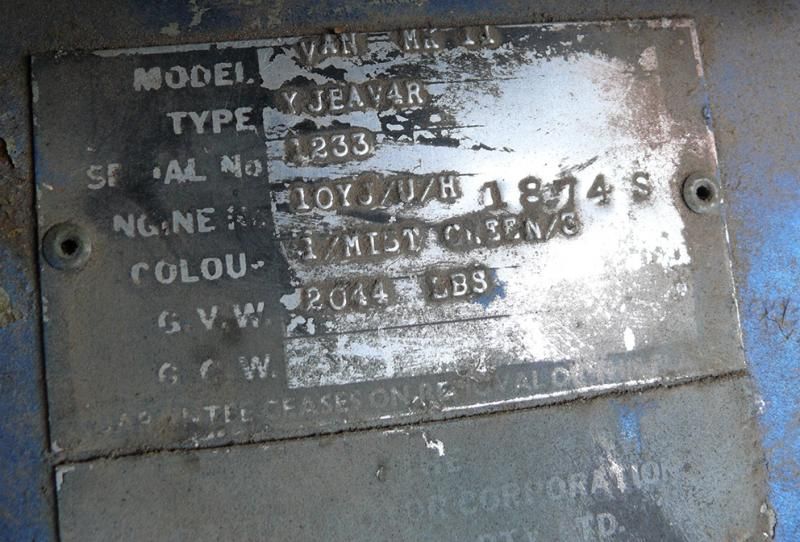Morris 1100 wrote:
04 V is the body code for a K van.
04 = 4th variant.
V = Van.
A slight correction:
O4V refers to YDO4V, which is the Australian Mini Van (YDO4 being the Australian Mini Minor - wind-up windows on a Morris 850 [ADO15])
YJBAV4 refers to MkII (Mini K) Van, where:
Y - Australia
J - commercial
B - BMC (A - Austin; M - Morris)
A - 1/4 ton (B - 1/2 ton, as in Austin 1800 ute - YJBBU1)
V - van
4 - 4th series. Now, this is the interesting bit: YJBAV1 was the Aussie version of the Morris 850 van (Feb 1964, released April, to April 1965). YJBAV2 was the first wind-up window version of YDO4, still with 848cc engine (May 1965 to Feb 1969). YJBAV4 is the fourth variant, as above. The third variant was not produced - YJBAV3, which was reserved for an automatic version of YDO4V.
So, a 1969 Mini Van could be either YJBAV2 or YJBAV4. I agree that 1969 Vans should have an ID plate due to being a commercial vehicle.
See Issue 21 of The Mini Experience
http://bmcexperience.com.au/issue-21/mini-van.html
Above is a photo of a 1969 MkII Mini Van ID plate. This was on a van in Perth a few years ago. This was mounted in the usual place for sedans, on the firewall behind the master cylinders.
Now, the page Doug (BMC Pubs) has put up from the Leyland standards, are for the Clubman series - introduced in 1971 and the page is dated 1973, so there may be some variance from that on the earlier cars.
Helping to date the car in question, the wiper location is the later type, so certainly post late 1968 (what was the date again?). Do you have any of the original glass from the car? That can often be used to date the car, provided it still has its makers mark clearly on it. Also, you can date is (give or take a couple of months) from some of the other equipment, like the wiper motor.
I hope this helps,
Watto.





